Observations - Microstructures
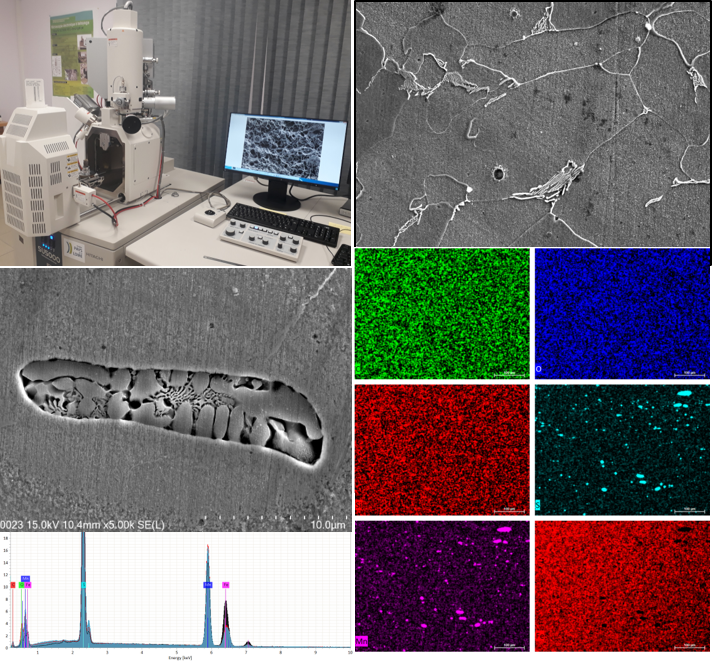
SEM EDS
The Scanning Electron Microscope (SEM) or Microscope Electronique à Balayage (MEB) is an essential equipment for the physico-chemical characterization of sample surfaces. This technique is based on the principle of electron-matter interactions and allows for a large depth of field observation and high-resolution surface imaging, non-destructive surface analysis, little or no surface preparation, the ability to analyze any type of material (mineral, organic, metallic), and a wealth of information (microstructure, appearance and fracture mode, coatings, corrosion expertise...).
Additionally, the SEM is associated with an Energy Dispersive Spectrometer (EDS) which allows for identification of elements contained in the sample by their property of emitting X-rays upon contact with electrons.
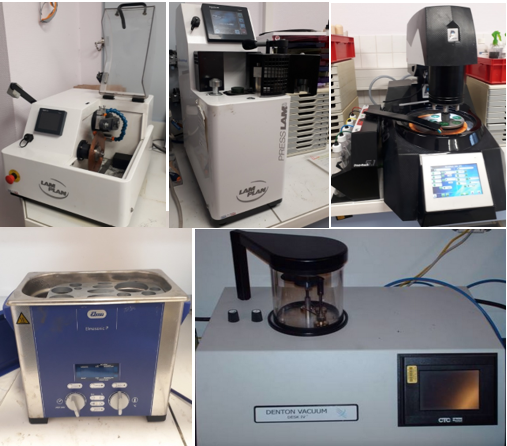
Sample preparation tools
Our platform has several sample preparation tools, an essential step before analysis and observation:
- A water-cooled precision saw for precise and non-deformed cutting;
- A semi-automatic polisher;
- An ultrasonic cleaner for effective sample cleaning;
- An automatic hot embedding machine, quick and easy to use (We also have the necessary equipment and products for cold embedding);
- A metalizer required for SEM/EDS analysis.
Depending on the type of observation (topographic, micrographic, etc.), we determine the sample preparation method (raw, polished) and all necessary operations. Adequate sample preparation is key to a successful analysis.
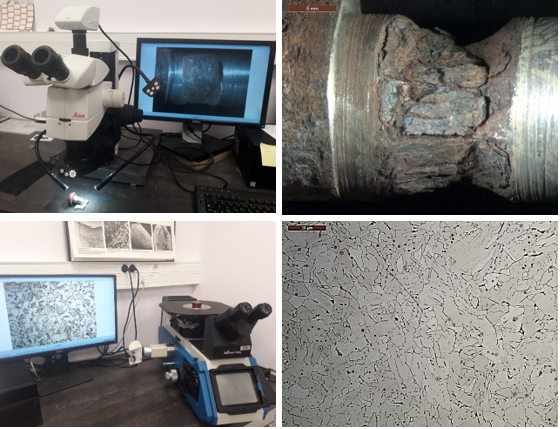
Conventional microscopes
Our laboratory has also other conventional microscopes for quick and efficient analysis of material microstructures and surfaces:
- Binocular microscope: this is a direct light microscope equipped with a powerful and adjustable lighting system. This device allows observation of samples up to a maximum magnification of about ×100.
- Inverted microscope: This is a direct light microscope where the source is placed above the sample and the objectives below. This device allows observation of samples up to a maximum magnification of ×1000.
- 3D optical microscope: This is a non-contact surface metrology system that allows for obtaining surface topography measurements on complex geometries.
These means allow us to obtain information on the microstructure of materials, to perform surface and cross-sectional dimensional measurements and to characterize surface defects. These techniques are mainly used in research work, but also in expertise on civil engineering structures and their foundations.
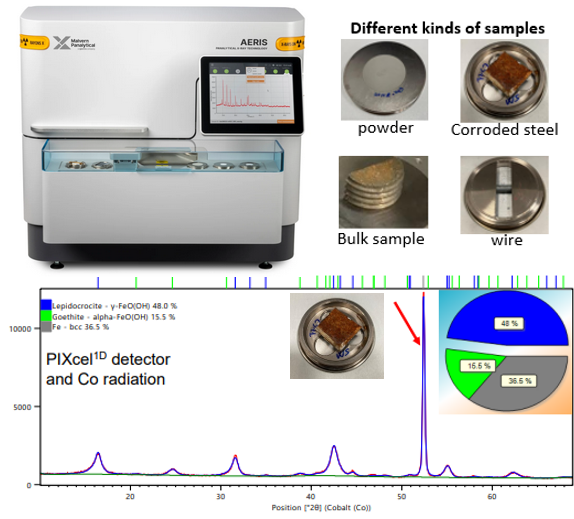
DRX
Our analysis platform is equipped with an X-ray diffractometer (XRD), the Aeris by Malvern Panalytical, a state-of-the-art tool designed for analyzing all types of materials, including powders, solids, and thin films. Compact and user-friendly, it provides accurate and rapid crystallographic data. Suitable for a wide range of applications, from fundamental research to applied studies, the Aeris combines outstanding performance with accessibility, even for non-specialist users.
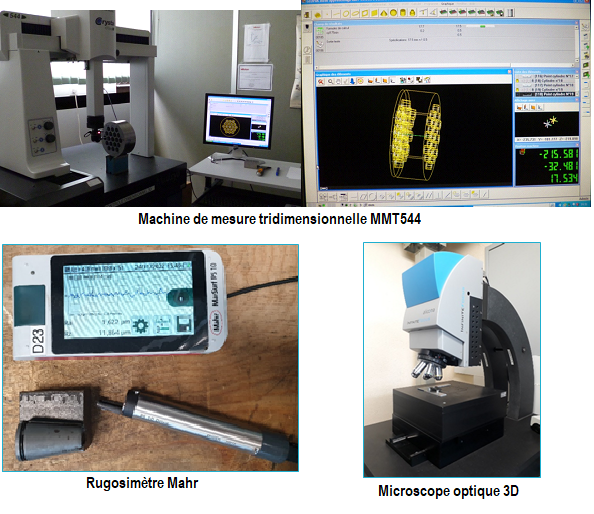
Geometric checks
As part of CE marking certification, among others, we perform geometric checks on different pre-stressing processes (anchor heads, keys, plate anchors, etc.). For this service, we have a MITUTOYO manual three-dimensional measuring machine (MMT 544) with a capacity of X-axis = 500 mm, Y-axis = 400 mm, and Z-axis = 400 mm. Its measurement accuracy is E = (3.5 + 0.45L / 100) µm, and the resolution is 0.5 µm. For specific checks, we also have a 3D optical microscope (such as for checking the tooth geometry of keys).
Furthermore, we perform surface roughness measurements using a portable MAHR roughness tester. The most commonly used parameters include Ra and Rz.
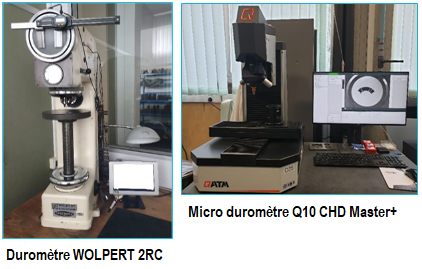
Hardness tests
Hardness is defined as the resistance of a material to the penetration of a harder material. In addition to determining the resistance to penetration, hardness tests can be used to monitor the structural transformations produced by heat treatments such as quenching, carburizing, or structural hardening of certain steels or alloys.
The hardness tests carried out by our laboratory are as follows: Brinell hardness test HBW, Rockwell hardness test HRc, Vickers hardness test HV, micro hardness test HV with the possibility of carrying out filiations allowing, for example, the measurement of carburization depth.
For these tests, the laboratory has the following equipment:
A WOLPERT 2RC durometer modernized for the HRc, HV30, HV50 and HBW2.5/187.5 scales with a resolution of 0.1.
A Q10 CHD Master+ micro durometer fully automated with a load range between 0.05g and 10 Kg.